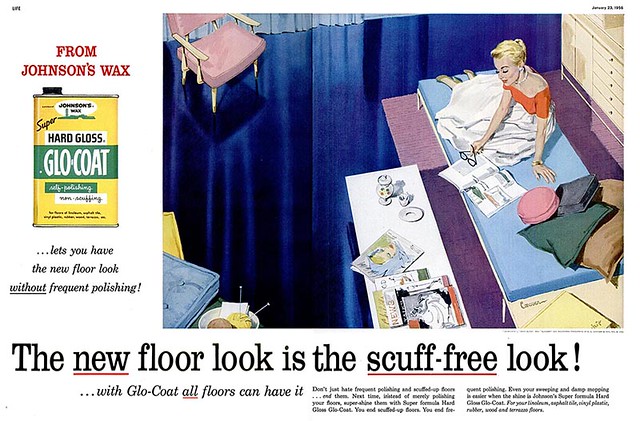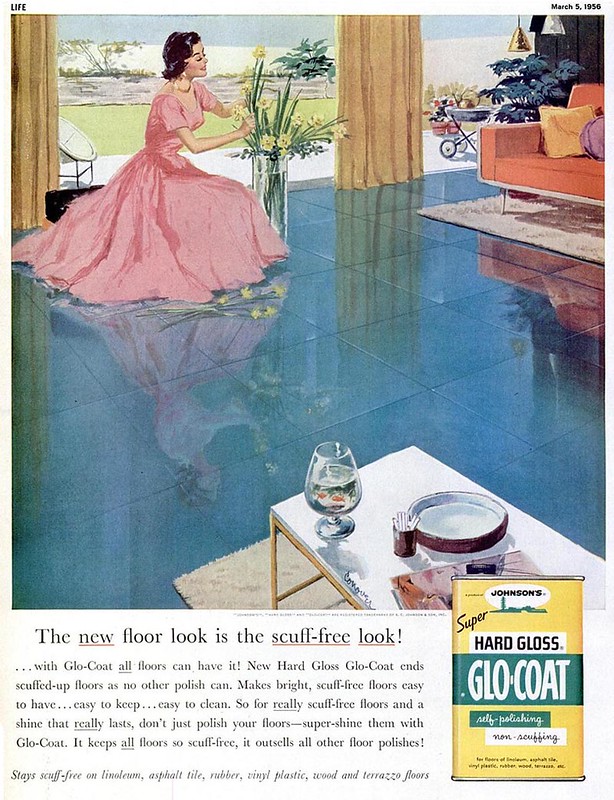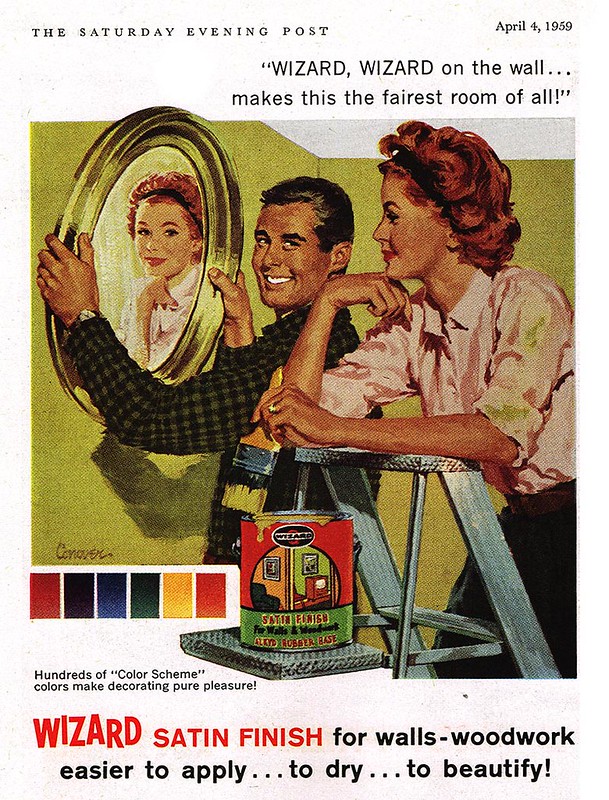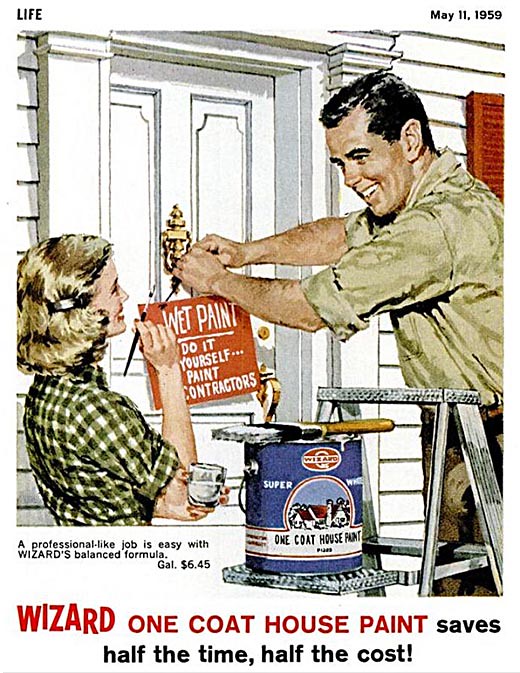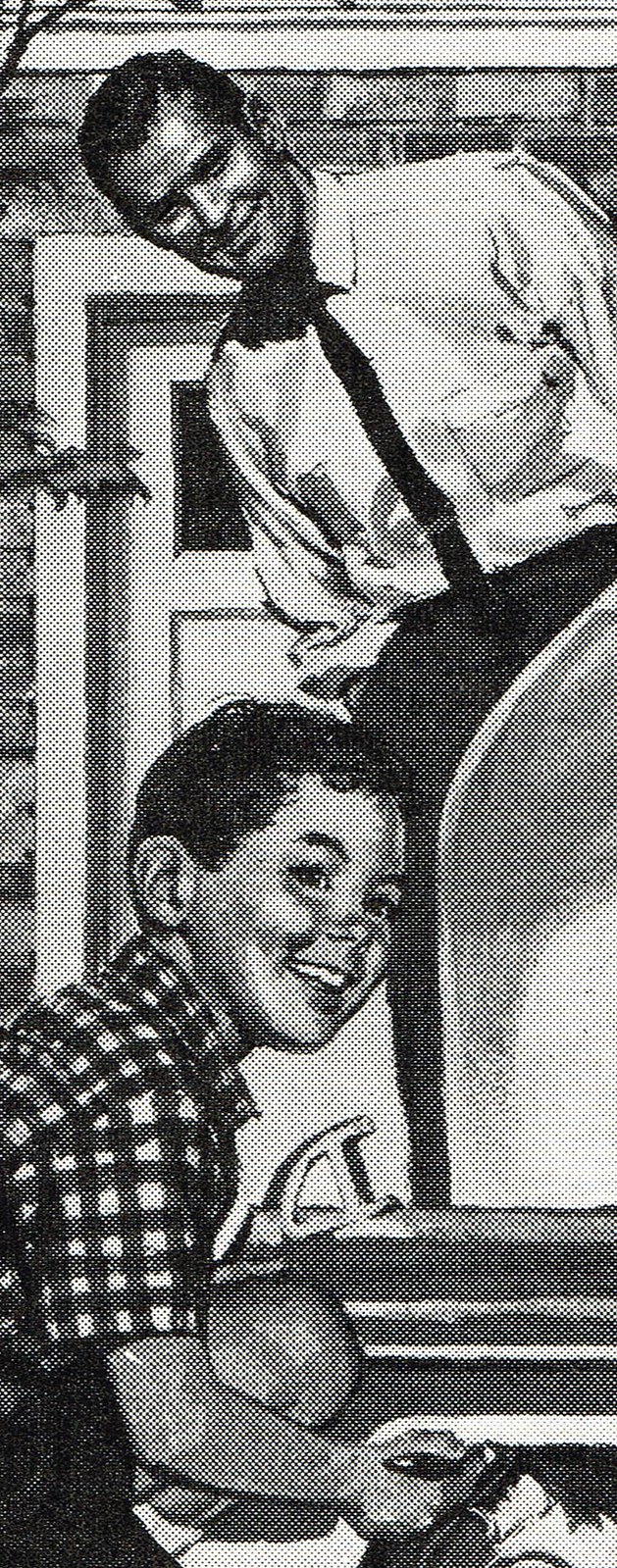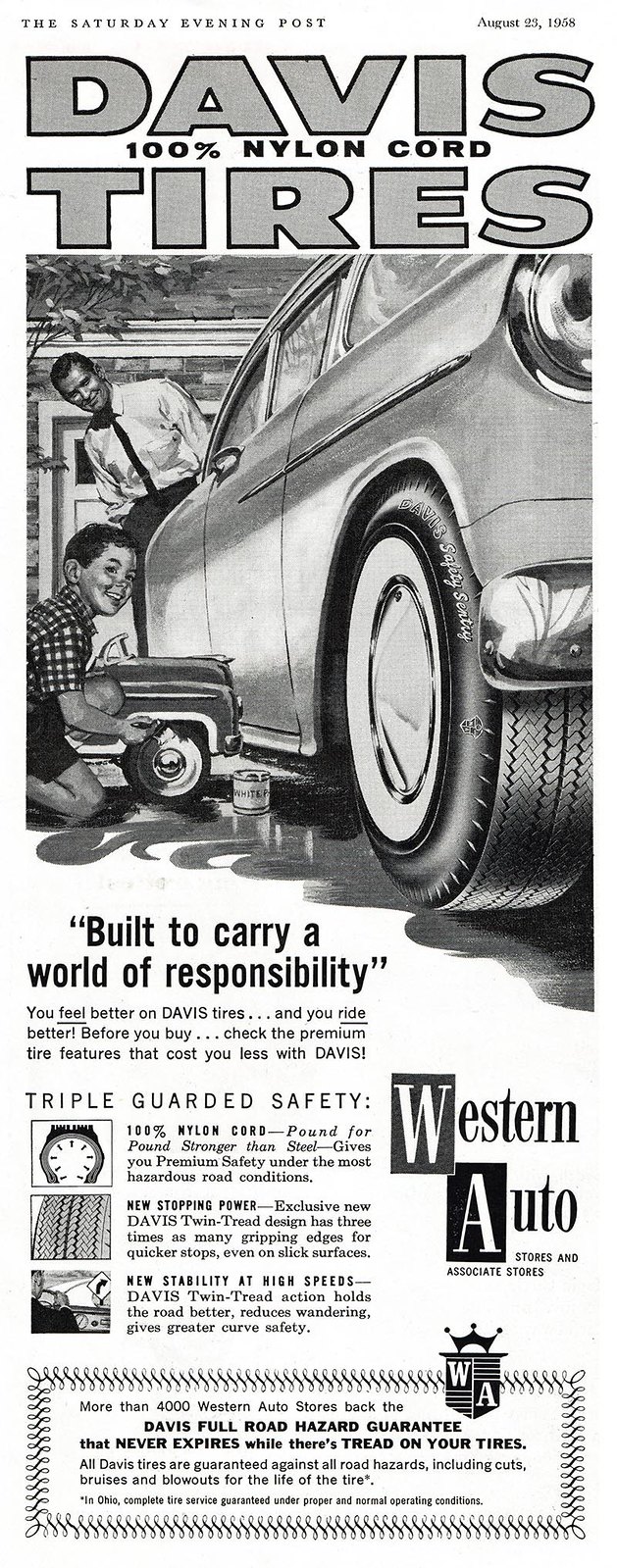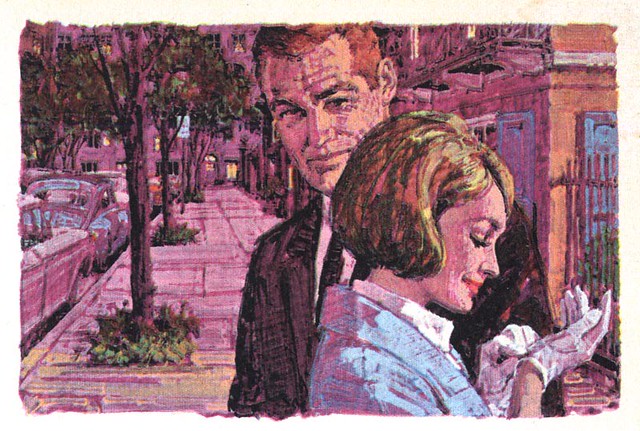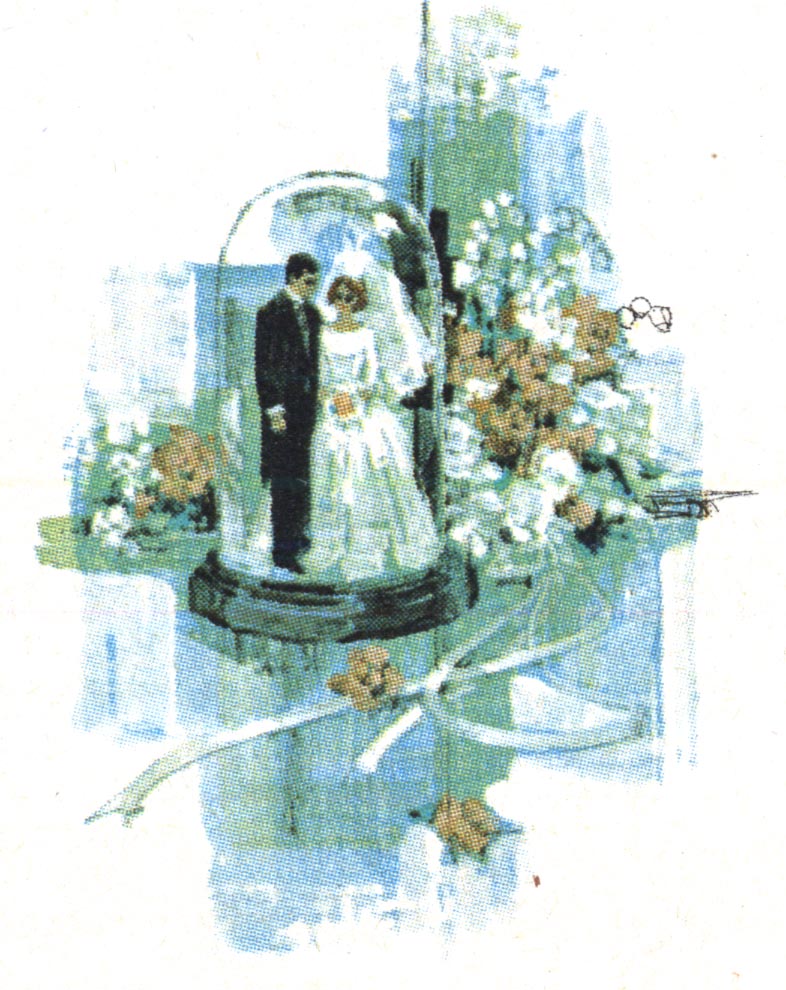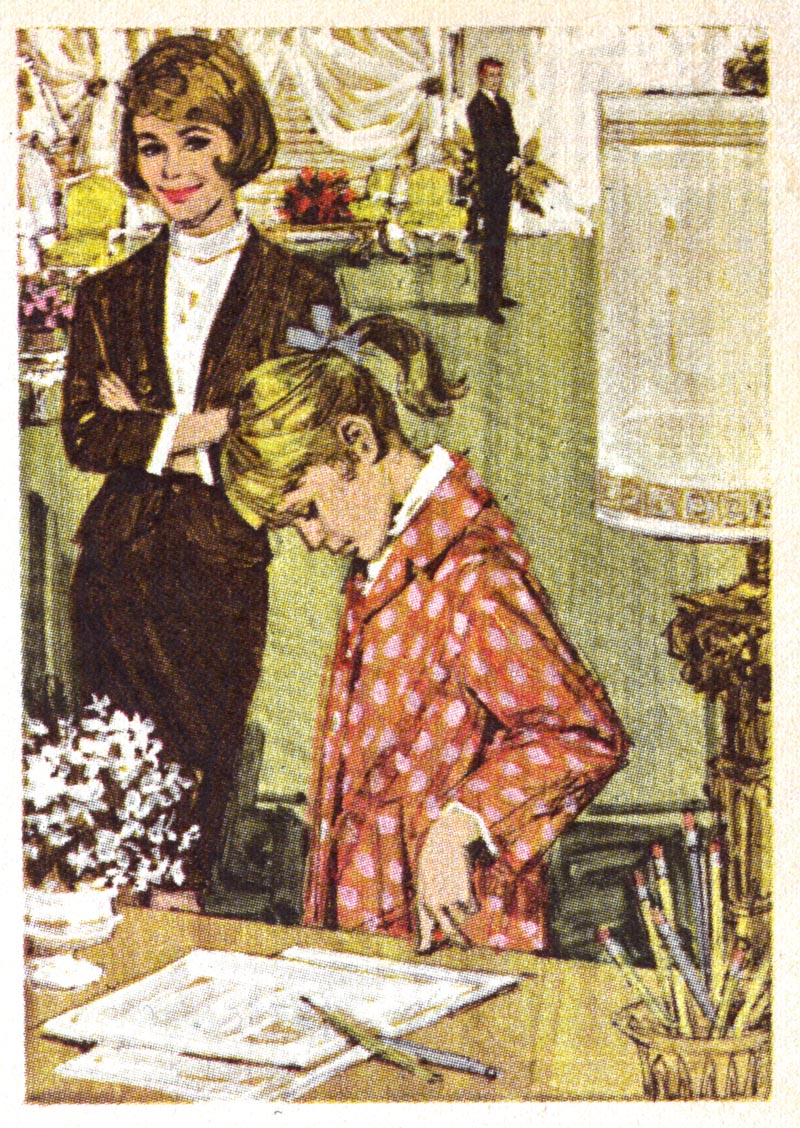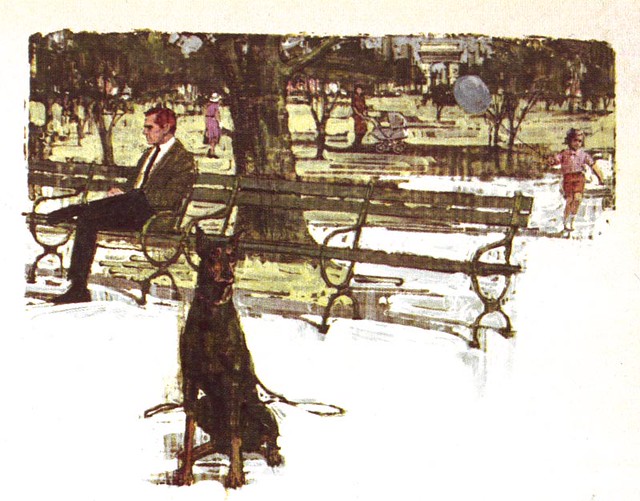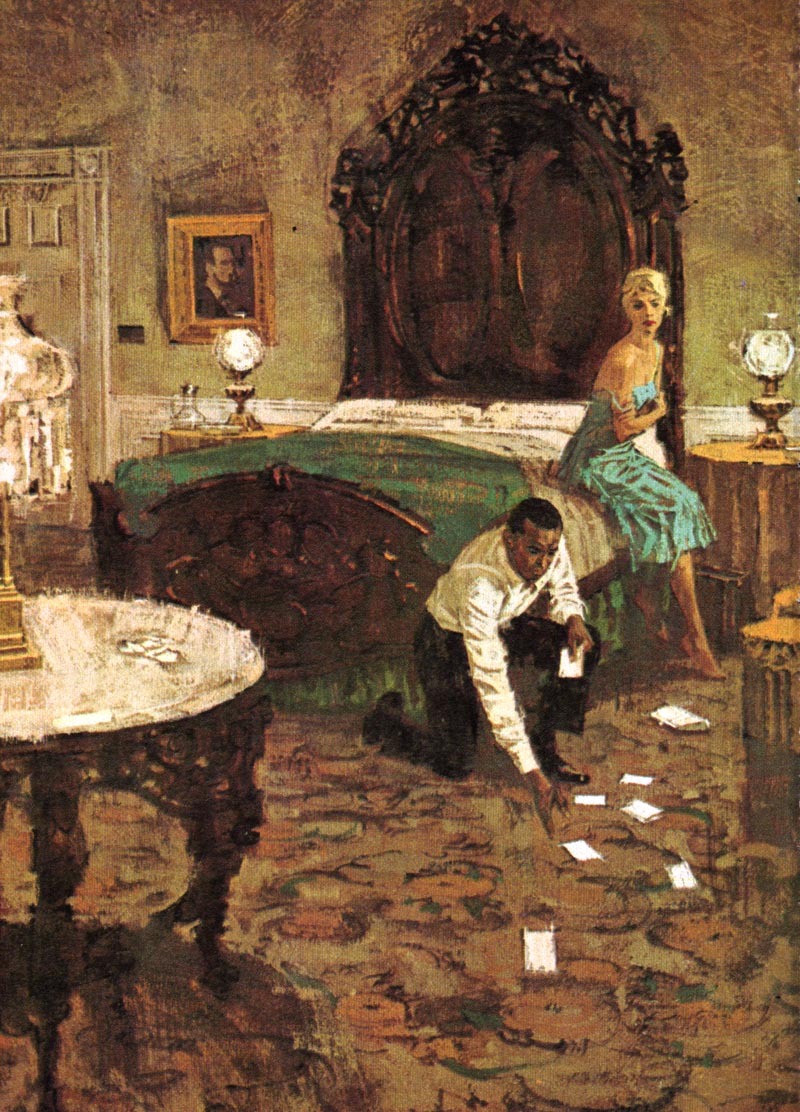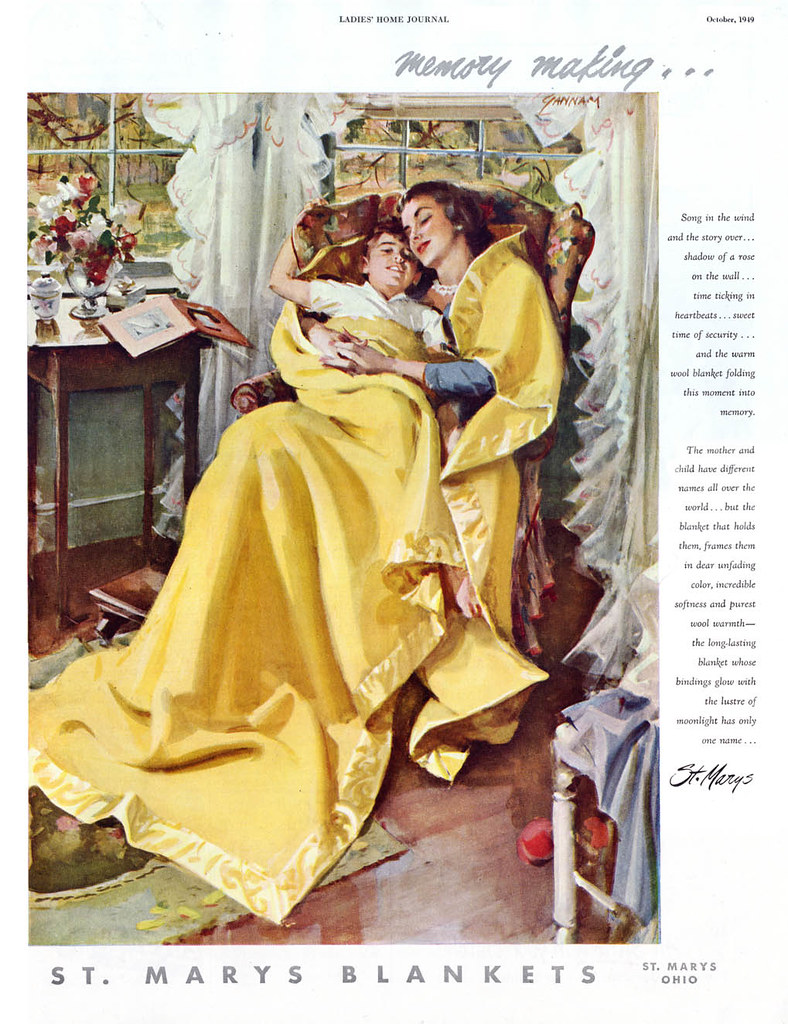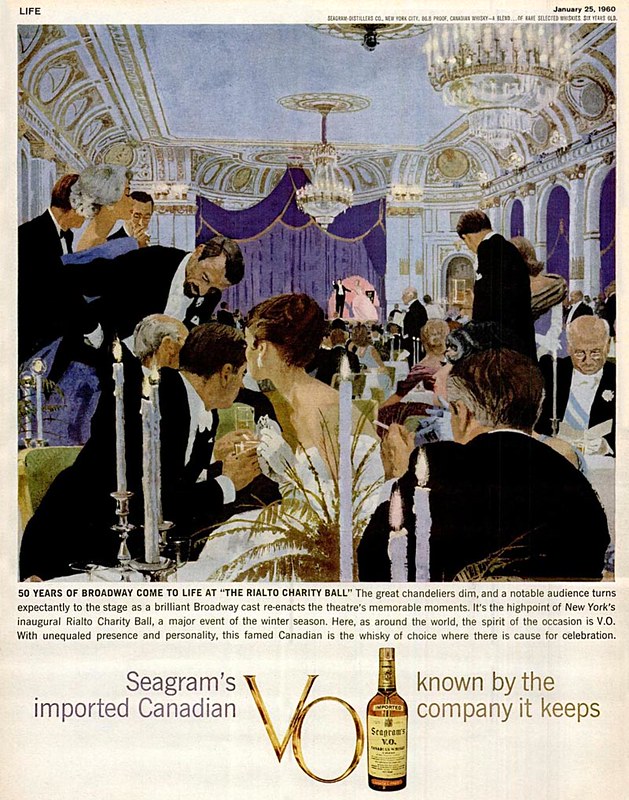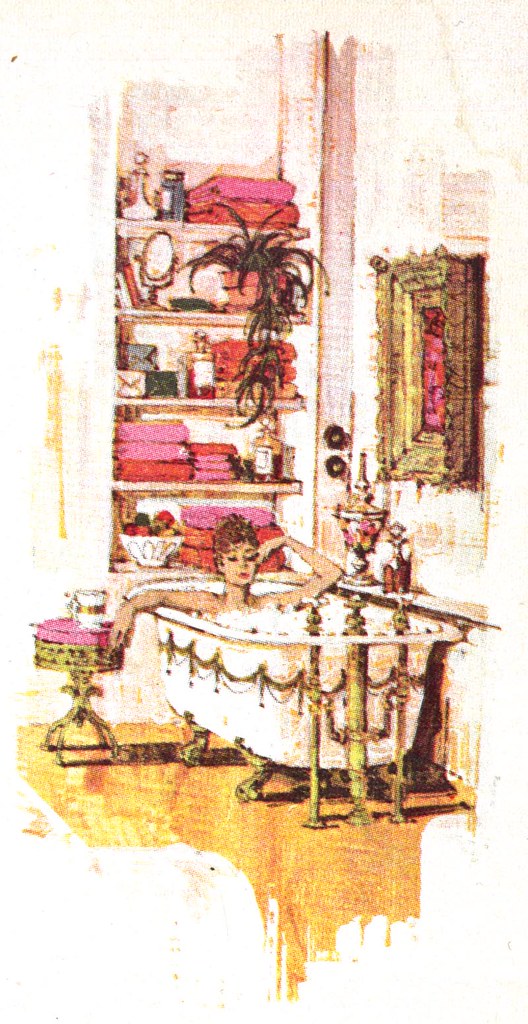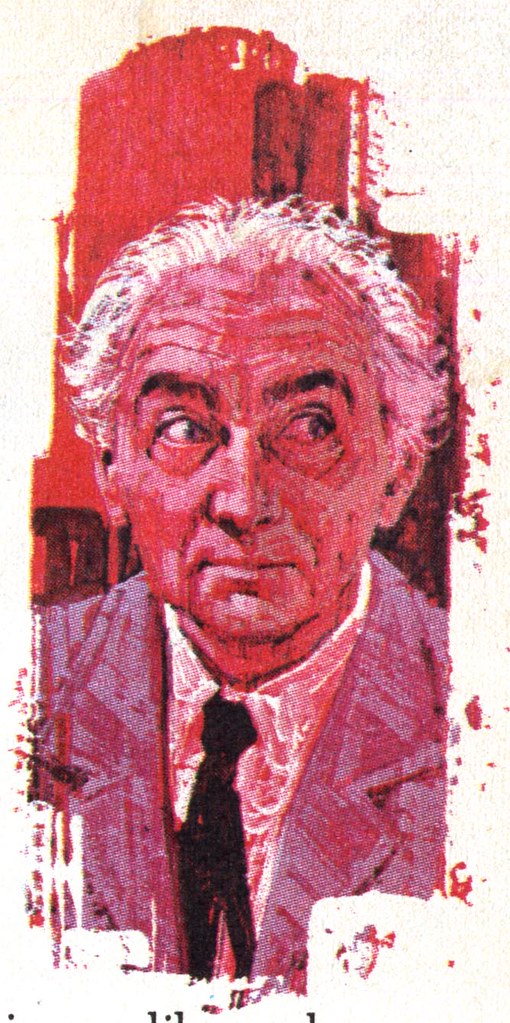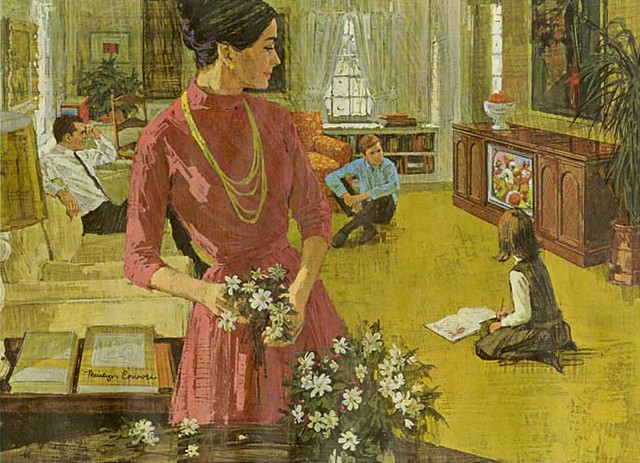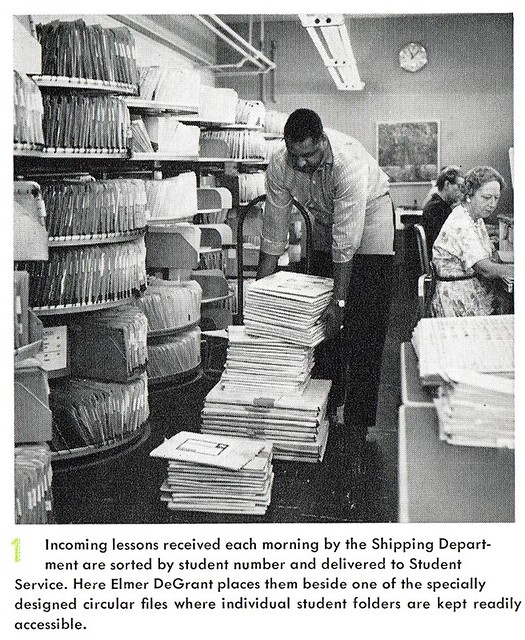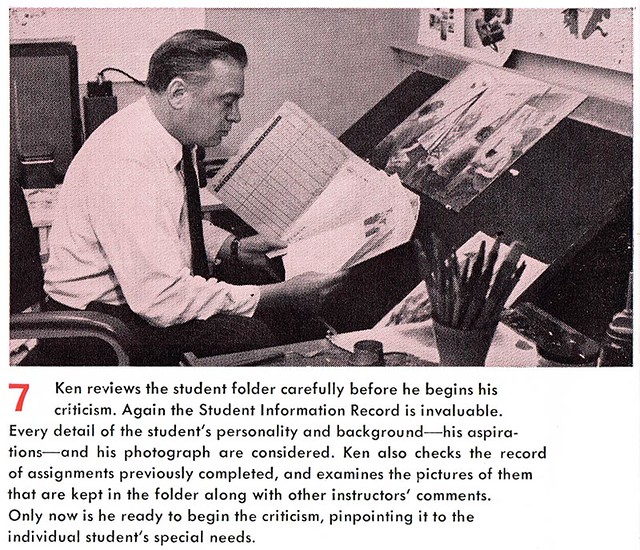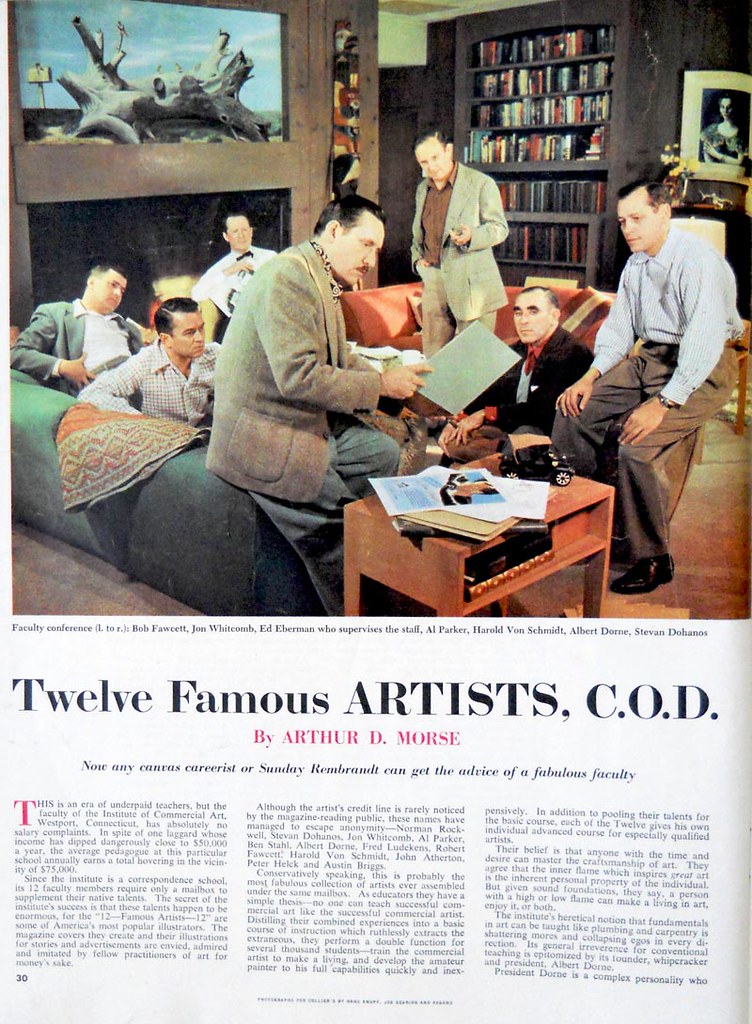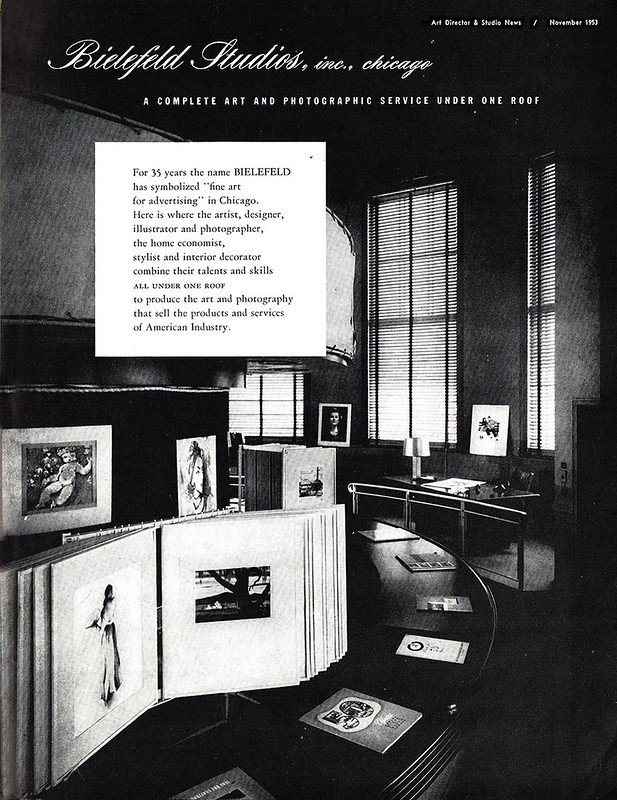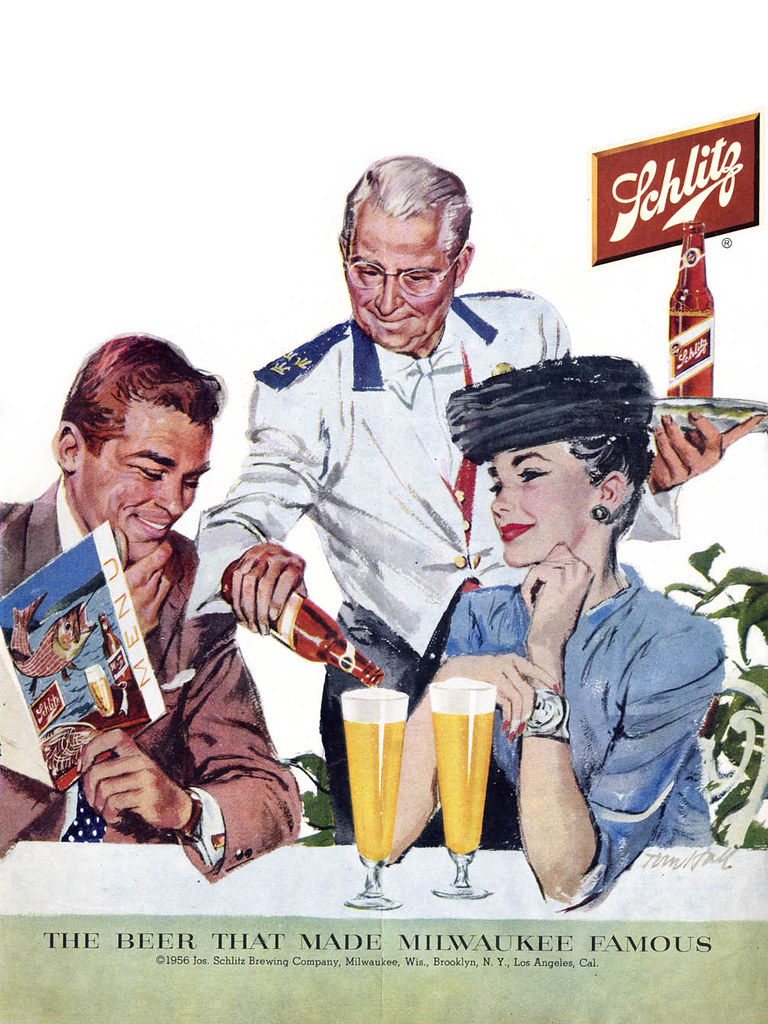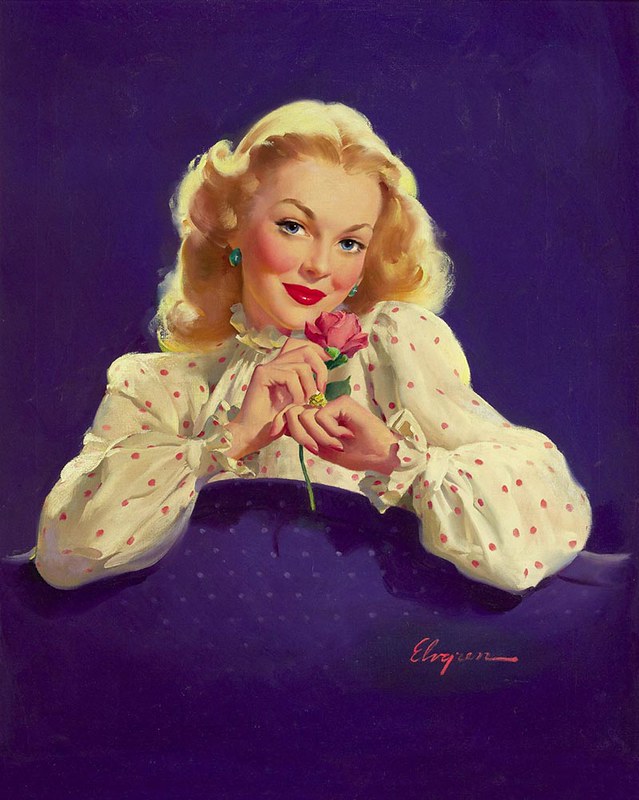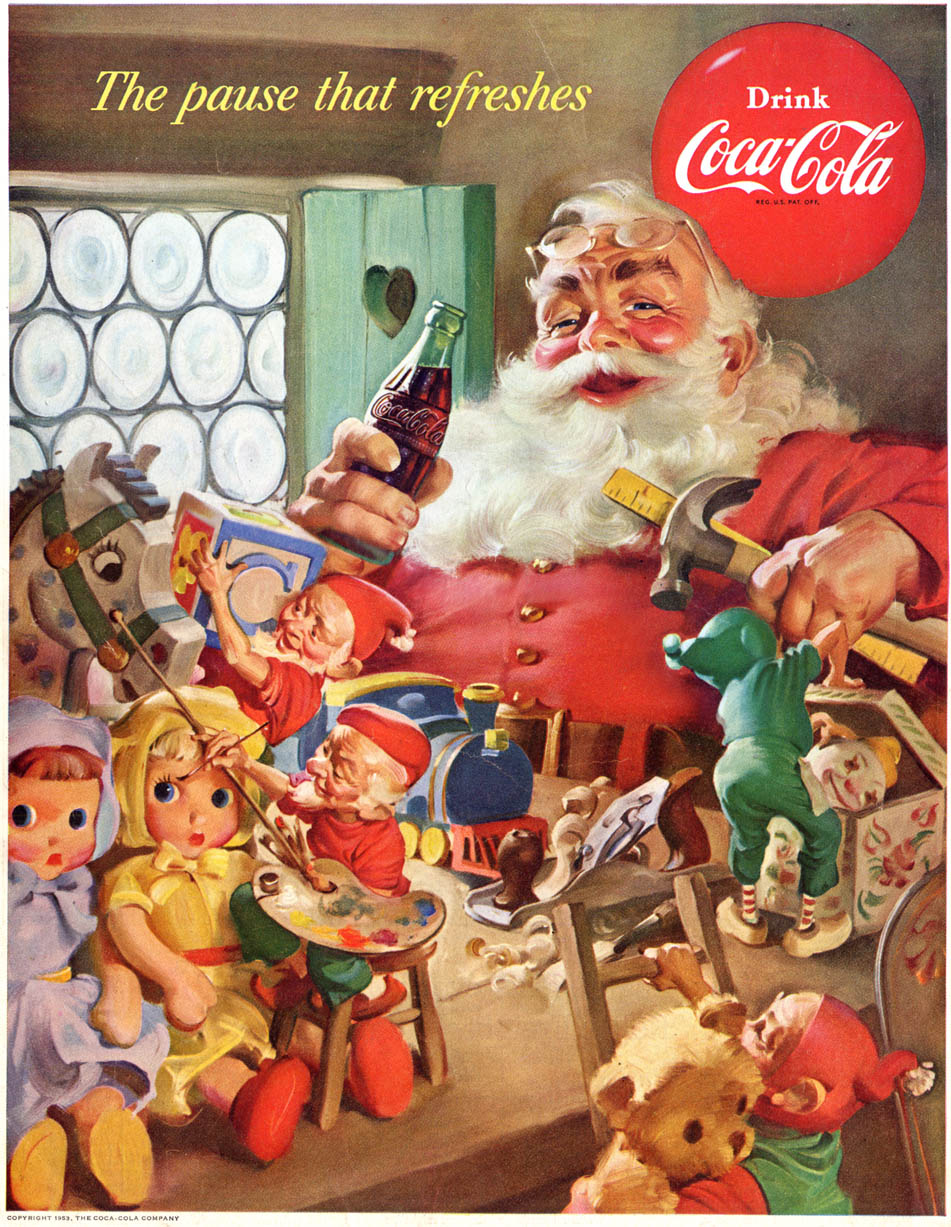LP: Can you recall what year it was when you and your husband [Hendrick Conover] moved to New York?
MC: '61.
LP: Ok, so that's around the same time you got the Reader's Digest job that I have...
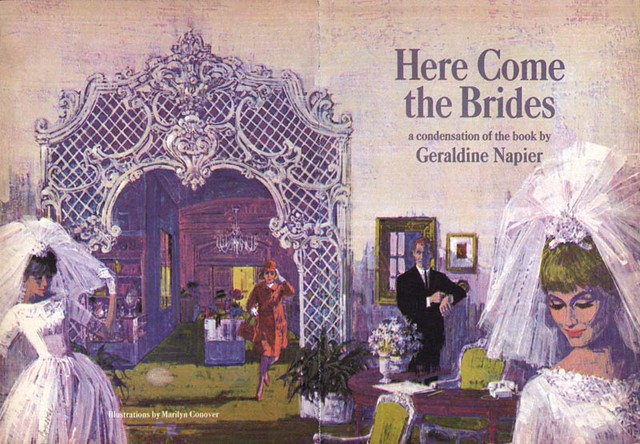
MC: Oh, it's in there some place. Yes! I remember I was doing one of the illustrations on a packing box in my studio. So yeah, that was '61, '62.
LP: Marilyn, I'm glad I found you and I really, really appreciate you taking the time to tell me all these details...
MC: Well bless your heart. They were a wonderful bunch; Joyce Ballantyne was a darling, Gil Elvgren was a darling, I mean we used to be up at their houses all the time. He was a sweetheart but they all drank like crazy.
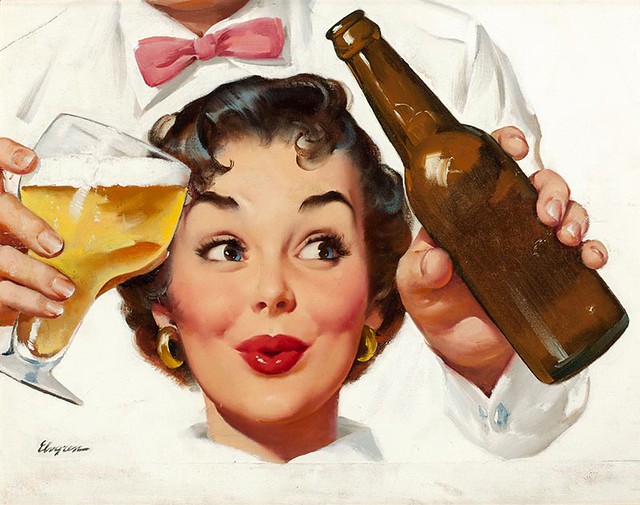
MC: Oh my god... but generous - at thirty five he was taking everybody in the studio to lunches at one of the jazzy restaurants all the time. I mean he lived like a little chubby king and he had these little chubby hands of his and he'd paint these beautiful girls!
LP: (Laughing) Wow!
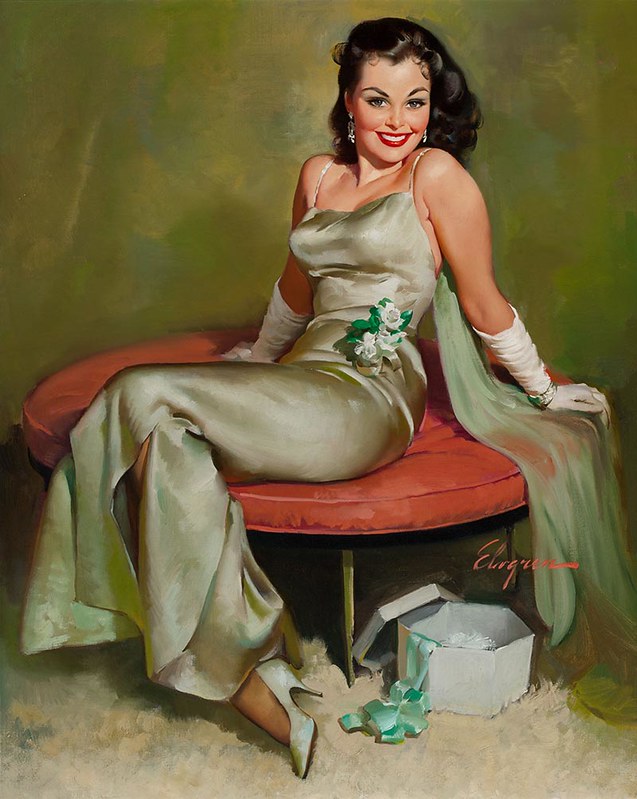
MC: And you say his originals are now going for two hundred -- I hope to god his two boys reaped some reward from that - no, I bet they belong to the, uh...
LP: Brown & Bigelow? The calendar company?
MC: Oh my god. And his kids are probably just making an average living. And they [Elvgren's originals] sell for up to three hundred thousand?
LP: Yeah, he's one of the most collected pin-up artists in the world now. There are several giant, heavy coffee table books of his pin-ups now, and every year they reprint them on all kinds of calendars and other merchandise.
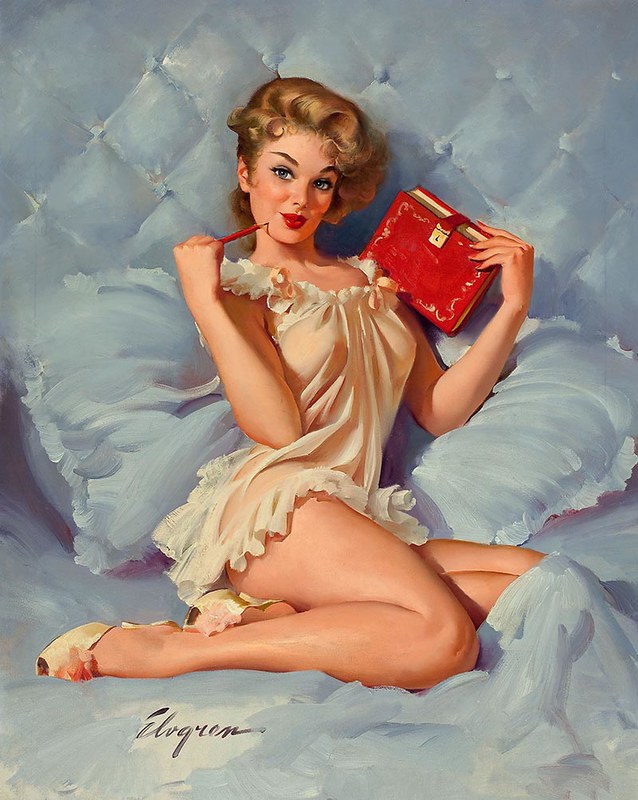
MC: And that crappy work to look at?! To be buying and hanging those paintings?! Where would you put them? In your bar? In your bathroom?!
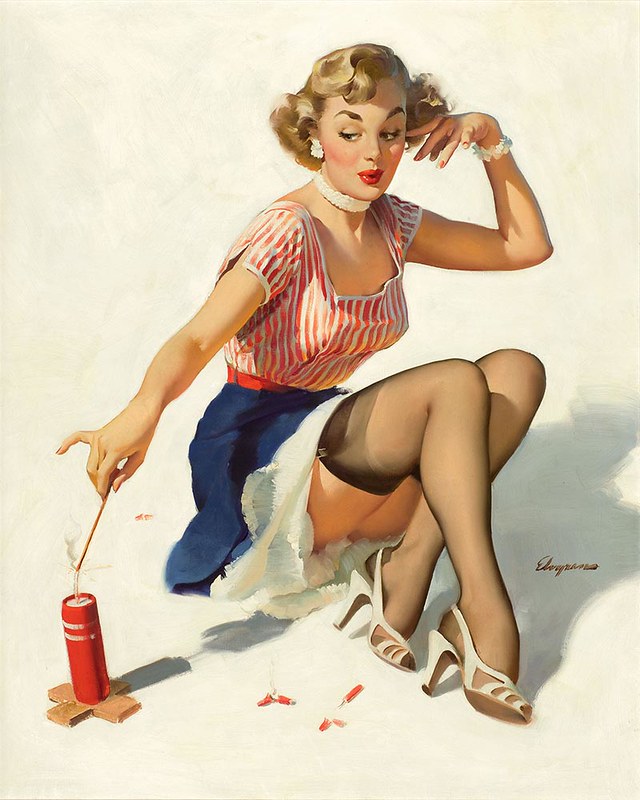
LP: Well, there's a lot of interest and affection in a nostalgic way for that era. I mean that's part of the reason I like it. I admire the quality of the work that was done back then.
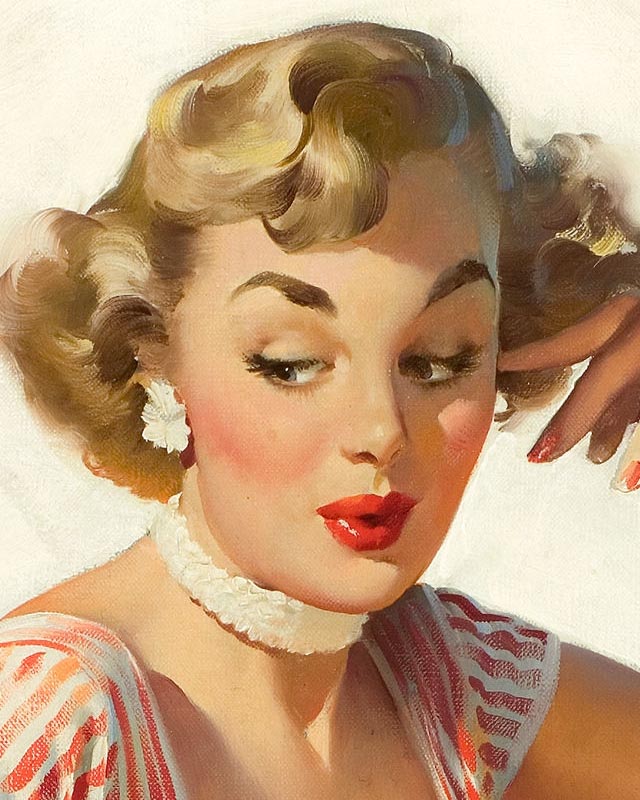
MC: What is the point of your obsession? I mean what are you doing with it? Just to do it?
LP: I do it because I discovered there were all these people like yourself who came before me in this profession who did amazing work but are largely forgotten and I just didn't think that was right. I thought it was a shame that people like myself who were graduating out of art school had never heard of Al Parker or Joe Bowler or any of these artists.
MC: Joe Bowler was another guy who did just incredible work.
LP: Oh yeah.
MC:I knew him as well, in New York.
(Below, Joe Bowler illustration, Saturday Evening Post, 1962)
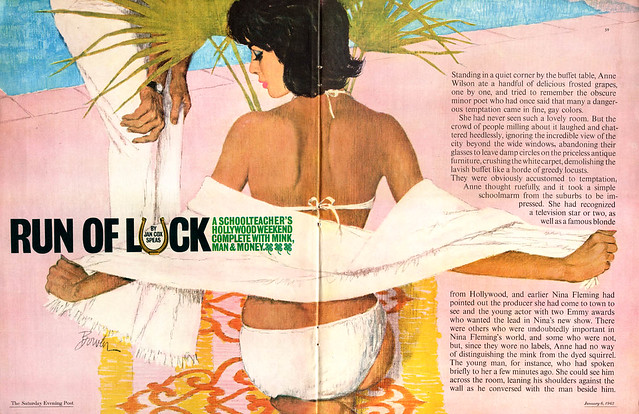
LP: Yeah, well, so I figured, if I hadn't heard of these guys then I knew for a fact most of my peers wouldn't have heard of them either and... I wanted to correct that. I wanted to make sure that all the people like you and all these others -
MC: Well what are you gonna do, write a book?
LP: No, no, I write about it every day on the internet, on my blog.
MC: Well good luck honey. And what do you do for a living? You're an illustrator?
LP: I'm an illustrator, yeah. I do finished illustration and storyboards. Now I do mostly storyboards because there's not that huge of a market for finished illustration anymore.
MC: No there isn't. There isn't. You look in your magazines and you don't see illustration anymore.
LP: No. No, most of us who are able to make a pretty good living at it now do what's broadly called "concept art." Every sort of artwork you can imagine for the preparatory stage of something else, whether it's an ad or a movie or a video game... all that stuff has to be visualized before they do the final version of it.
MC: I see. Well bless your heart. Well good luck with all you're doing and um... I don't think I could be of much help anymore. I think I told you everything. Unless you have something very specific you can call me. But I don't want to go back there. Ugh. You have no idea how funny I feel physically right now. Ugh.
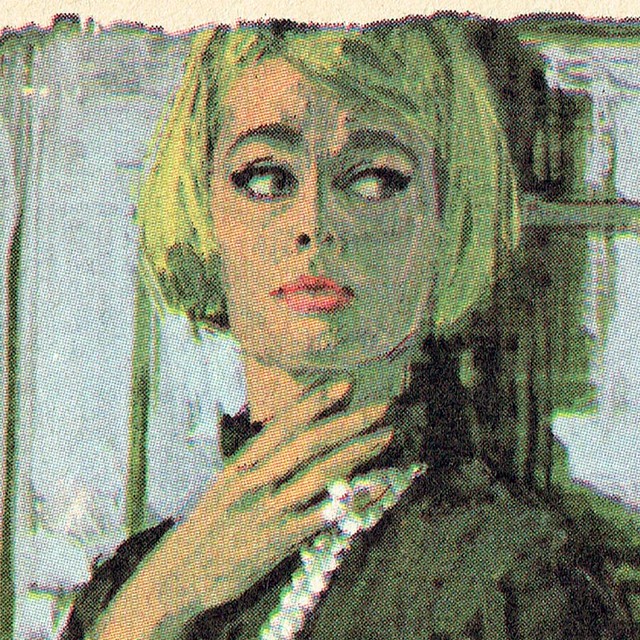
LP: Really? I'm sorry...
MC: No! Isn't that funny? Because it brought up those difficult years - I mean for me. It was the pressure - I mean, with all those competitors, you had to be good. You had to be. And the cream of it was, at that time illustrators were working for Time magazine, doing covers and that I was very proud of. I was separated by then and worked alone so much that when my first cover - you wouldn't even know him - the energy czar from the '60s - it was my first Time cover. And I even got called by one of the older illustrators to tell me what he thought of the integrity of the painting and "blah, blah, blah," you know.

MC: So one day I just got on the train from Westport and went in to New York and walked all around Grand Central Station and saw my painting on every newsstand. I just thought, "I'll be damned." And I didn't really feel anything... because of all the difficulties I'd been through. And I looked around and I just thought, "well, there it is, that's that." And I just got on the train and went back home.
LP: Wow... that was William Simon.
MC: How'd you know?
LP: I just looked it up on the internet. I just typed your name into Google Image Search and one of the first images that came up was that Time magazine cover.
MC: You mean you can see the picture?
LP: Yeah, I'm looking at it right now. It's got a bright orange background...
MC: And there was also one when Patty Hearst went missing - I did the Patty Hearst...
LP: Oh, well I'll search for that one as well.
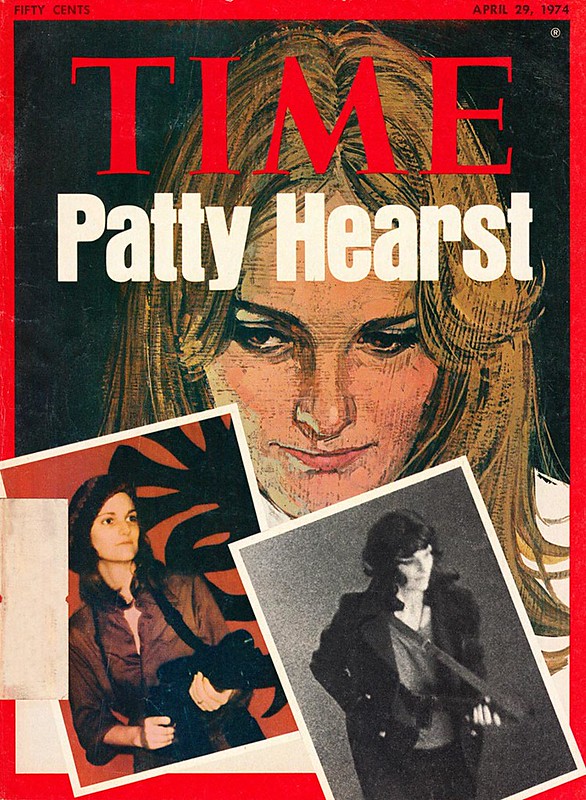
MC: ...and then the other one was the gal who wrote... oh my god, she wrote one of the big books at the time... oh well, it doesn't make any difference.
[Marilyn was thinking of Colleen McCullough, author of The Thornbirds. I was unable to locate a scan or photo of that cover ~ L]
MC: Well, honey, if you need anything specific, if you think I can help, I'd be happy to. Ok?
LP: Thank you so much, Marilyn. You have a great day.
MC: Ok, you too, bye bye.
* The original paintings from Marilyn Conover's three Time magazine covers were donated by the publisher to the Smithsonian Portrait Gallery.
Thanks to Heritage Auctions for allowing me to use some of the Gil Elvgren scans from their site in today's post.


